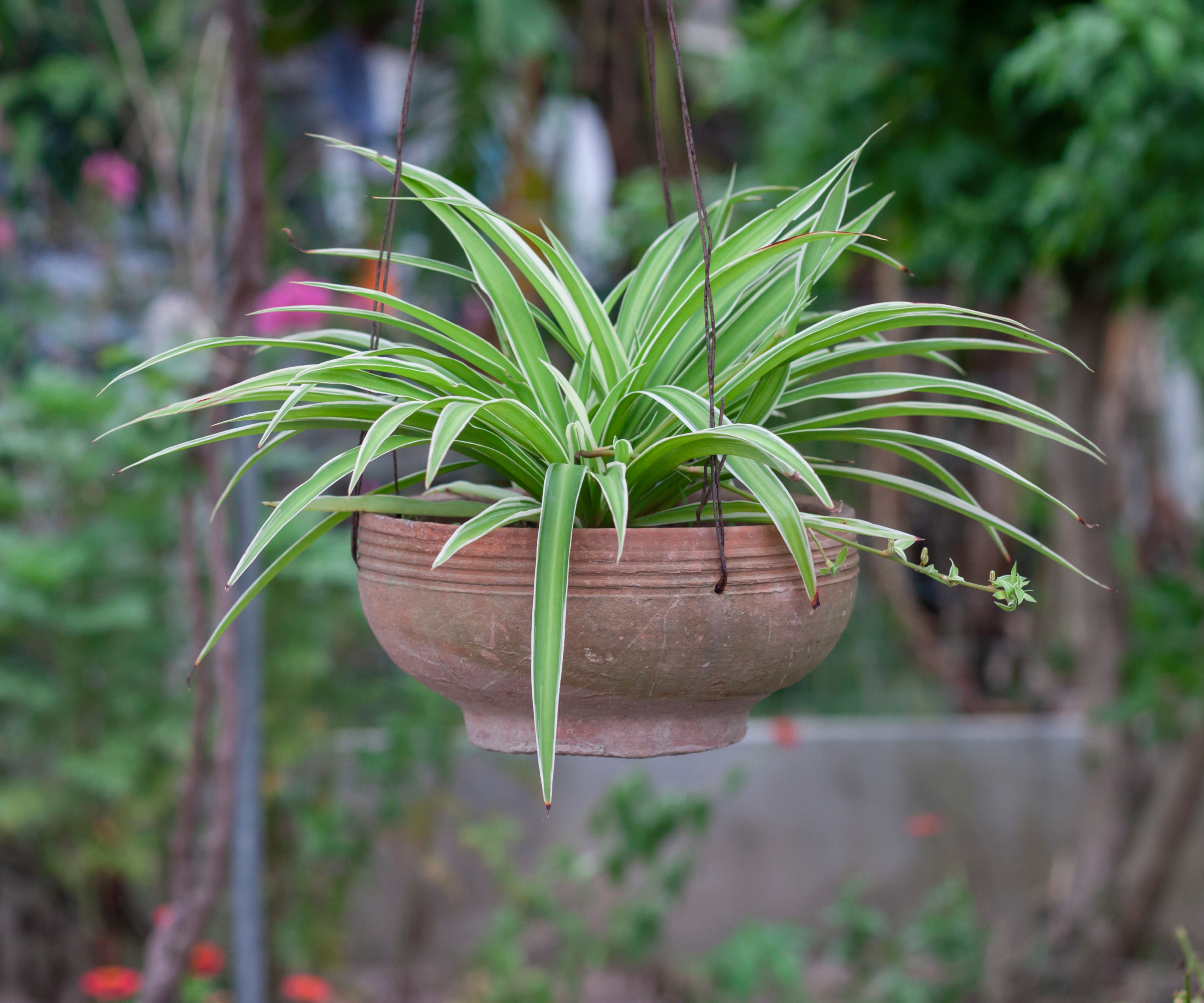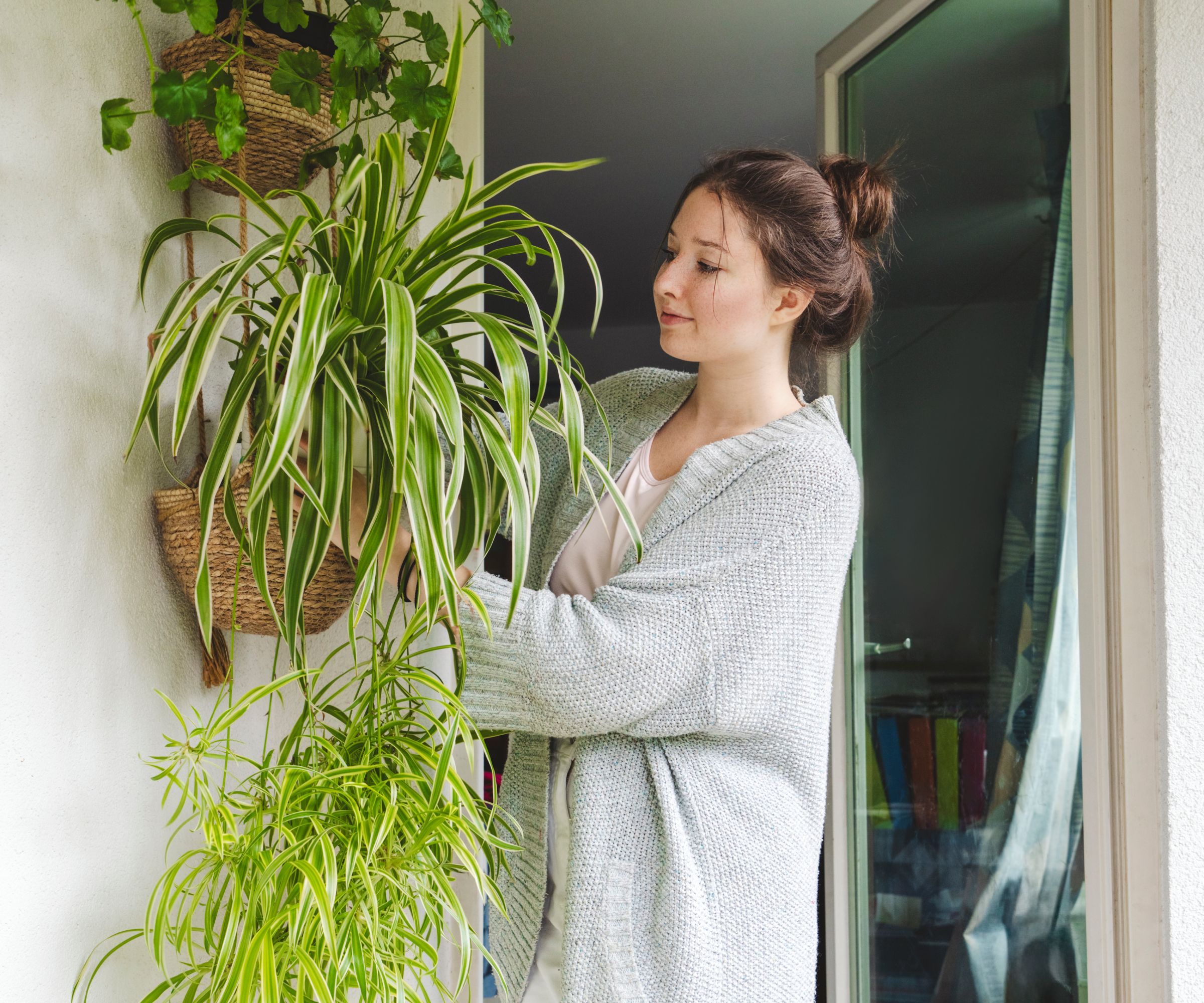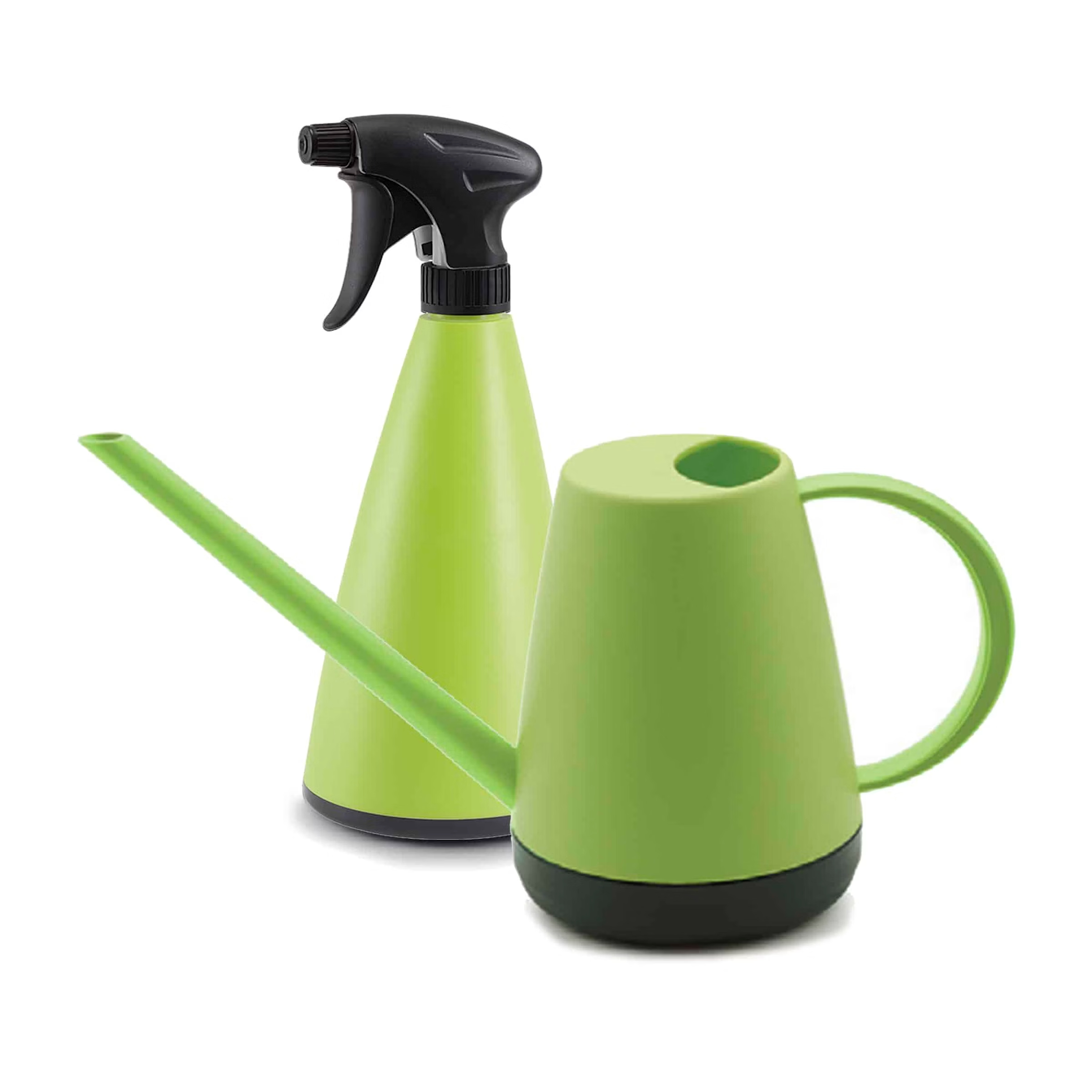How To Grow A Hanging Spider Plant – For An Elegant Indoor Or Outdoor Display
Of all the beautiful baskets we see, the hanging spider plant is probably the easiest to grow. Let your hanging basket spill over with little spider plantlets!

Amy Draiss
Spider plants (Chlorophytum comosum) are fun, easy to care for, and altogether charming plants. Their grass-like leaves have a mounding habit and grow long enough to arch down to form very attractive hanging plants. In fact, a hanging basket spider plant can change an ordinary living room into a cool and casually elegant space. To top off the accolades, the plant develops baby plants – truly miniature spider plants - on long, flexible stalks that hang down from all sides of the plant. In short, a hanging spider plant is a great houseplant.

Are Spider Plants Good Hanging Plants?
If there’s a better species than a spider plant for a hanging basket plant then I have yet to discover it. Spider plants make beautiful hanging plants and are extremely easy to maintain in top condition. They are not prima donnas in terms of care and tolerate different levels of light exposure and irrigation.
There is a variety of spider plant cultivars, including an all-green variety, but I’ve always preferred a variegated spider plant variety like 'Vittatum', with long, strappy bright green leaves with a white stripe down the middle. The cultivar 'Variegatum' has green leaves with white edging, while 'Mandaianum' has green leaves with yellow striping. The leaves can get quite long – to 36 inches (1m) – and arch down on either side of the container.
What truly makes spider plants exceptional houseplants, however, are the babies. These plants are unique in that spider plants propagate by growing miniature plants – tiny spider plants with strappy green and white leaves and roots – from long, pale drooping stems. These baby spiders arch down on all different sides of the plant. Planted outdoors, the baby roots will establish once they touch the ground, planting themselves. In a hanging houseplant, you can snip off the babies once the roots are large enough and plant them as new houseplants in their own containers.
Where Is the Best Place To Hang a Spider Plant?
Spider plants don’t do well in direct sun or even too much heat. They tolerate shade but grow best in dappled sunshine or indirect light.
Hang spider plants well away from heaters, but also away from air conditioning vents. They like even, mild to warm temperatures. Don’t subject them to temperatures less than 55 degrees F. This means that you should keep them away from windows on cold nights.

How to Care for a Hanging Spider Plant
Plant your hanging spider plant in average potting soil. You’ll need to use a hanging basket with drain holes for spider plants. Although the plant is known to be very tolerant, it will not grow well – or live long – in wet soil.
Sign up for the Gardening Know How newsletter today and receive a free copy of our e-book "How to Grow Delicious Tomatoes".
Spider plants tolerate some drought. On the other hand, it is important to water the plants when the top inches of soil dry out. The plants are sensitive to fluoridated water, so rainwater or distilled water works best. Ideally, take the plants outside and hang them up, then water your spider plants until the excess runs out of the drain holes.
Don’t fertilize spider plants very often, if at all. (I never fertilize mine at all and they thrive.) Too much fertilizer can burn the roots. Generous fertilizer also seems to limit the number of babies a spider plant has.
Don’t repot your plant unless you see roots coming out of the soil. Spider plants like to be a little pot-bound and have more babies when they are tight in their containers. If the plants do grow too big for their containers, you can divide spider plants into two. Cut the root ball with a sharp garden knife, then replant each section in its own container.
This article features products available from third-party vendors in the Gardening Know How Shop.

Teo Spengler is a master gardener and a docent at the San Francisco Botanical Garden, where she hosts public tours. She has studied horticulture and written about nature, trees, plants, and gardening for more than two decades, following a career as an attorney and legal writer. Her extended family includes some 30 houseplants and hundreds of outdoor plants, including 250 trees, which are her main passion. Spengler currently splits her life between San Francisco and the French Basque Country, though she was raised in Alaska, giving her experience of gardening in a range of climates.
- Amy DraissDigital Community Manager
